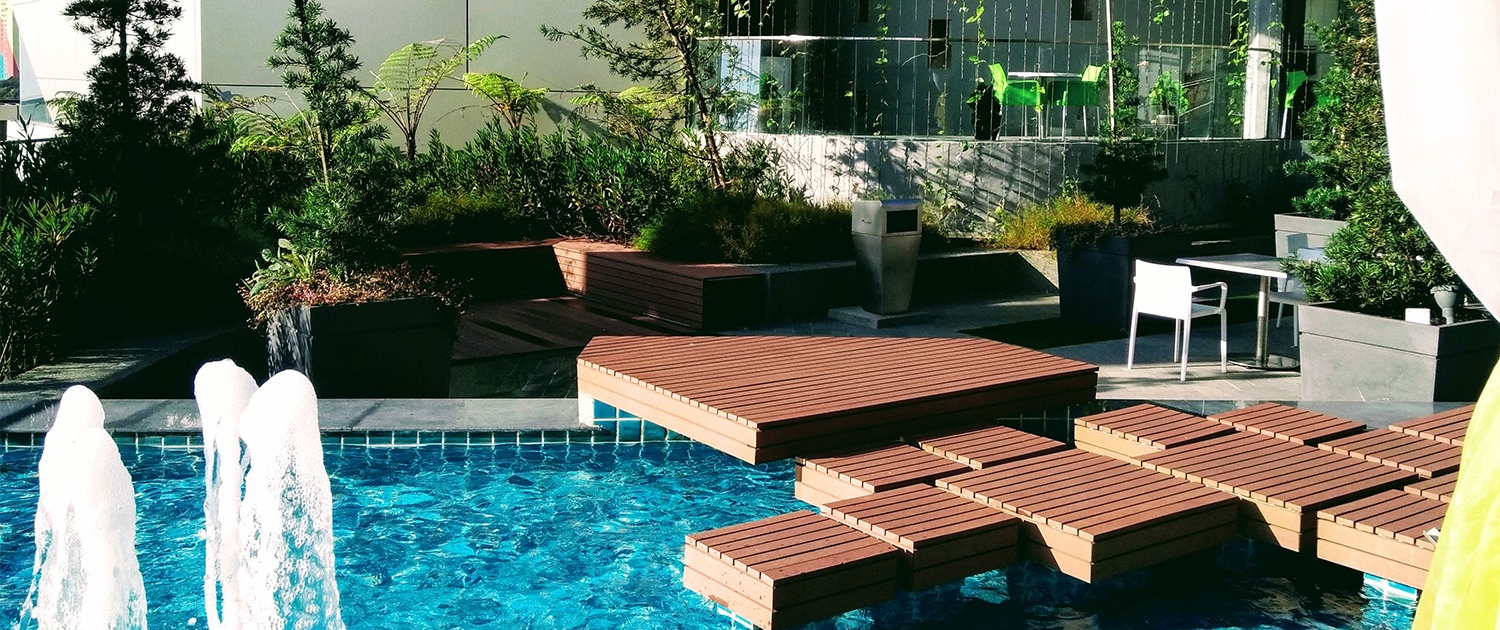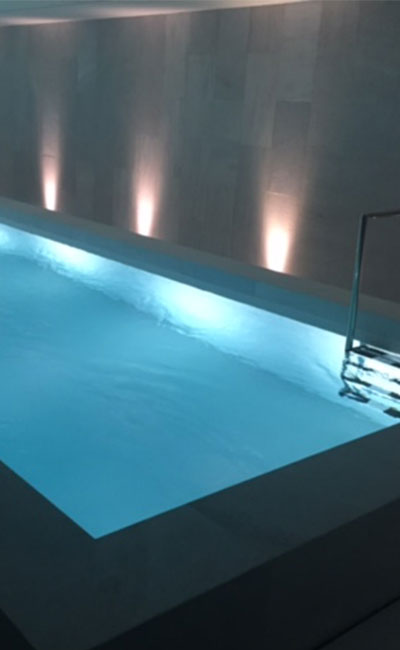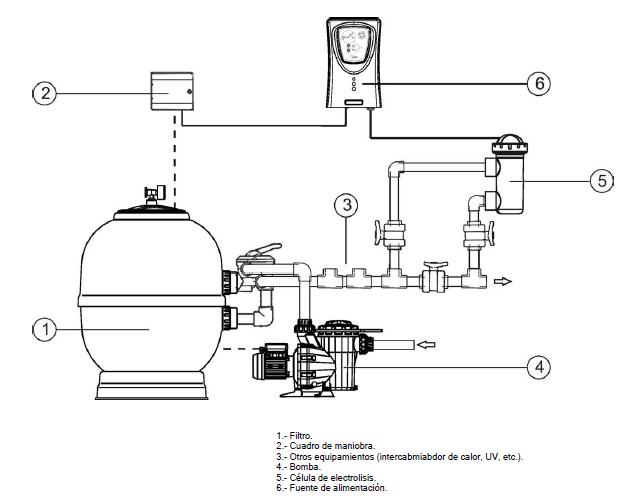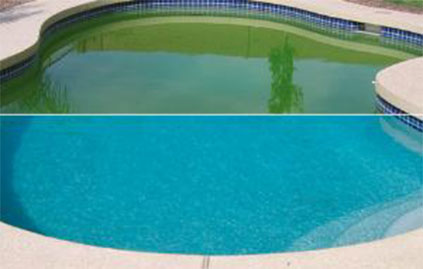Floculation
In any type of pool, turbidities appear sometimes, the water losing its condition of transparency. The cause is tiny particles suspended in the water, which may have been introduced for different reasons:
- Presence of algae, bacteria, organic matter.
- Precipitation of calcium and magnesium salts.
- Dust introduced through the air or by bathers.
- Oxidation of iron and manganese salts.
- Rain mud, etc…
In most of these cases the particles introduced into the water are so small (colloidal) that they are not retained by the filter and return to the pool water again. So that this does not happen, it is necessary to use flocculants, which are capable of grouping these particles so small, into particles of larger size and weight, causing them to be retained by the filters with ease, or their discharge (decanting) to the bottom of the pool, facilitating the subsequent collection with the cleaner.
A dosage of the flocculant product It can be done in different ways depending on its format: directly on the water of the pool, pouring the necessary dose in a container with water and distributing this solution on the surface of the pool equally; in the skimmer, placing the necessary amount of flocculant in the form of granules, tablets or cartridges; or injected into the circulation circuit by means of a metering pump that injects the required amount of flocculant before the filter.
Disinfection with active oxygen
Active oxygen is an alternative to chlorine disinfectant, characterized by the softness and quality that it gives to water, avoiding the discomfort derived from chlorine. It is colorless, odorless and innocuous, does not irritate the skin or eyes and is beneficial for both people and the environment.
The active principle of this system is the powerful oxidation of organic matter dissolved in water. This alternative to chlorine releases an oxygen that combines with organic matter and stops its activity. All methods of disinfection with active oxygen are based on the combination of two active components that complement each other to carry out, on the one hand, disinfection of water and oxidation of pollutants, and on the other the prevention of algae. This combination allows a synergistic effect, which is essential to achieve a disinfecting power similar to that of chlorine.
The main characteristics that you will obtain from the use of this disinfection system are:
- Provides a soft and natural bath water
- Water does not irritate eyes or mucous membranes
- Does not dry out skin or hair
- Does not give off bad smells
- Does not have flavor
- Does not discolor or make white
Saline chlorination
To enjoy a clear and crystal clear pool, it is very important to combine filtration and water treatment. If you are one of those swimmers who are uncomfortable or irritated by chlorine, salt electrolysis is an interesting alternative and, without a doubt, it is much more respectful with the environment. This technology also has the advantage that disinfection is done automatically. You just have to put salt, install and get into the water!
IS TREATMENT WITH SALT AS EFFECTIVE AS TRADITIONAL CHLORINE?
The answer is that yes, without a doubt.
Electrolysis transforms the salt present in the water into chlorine and sodium, which ensures a natural disinfection.
The water in the pool is slightly salty (between 3 and 5 grams of salt per liter, that is, 9 times less than seawater). Electrolysis, through the cell, the salt is transformed into gaseous chlorine, a powerful disinfectant that dissolves instantaneously in water. As with chemical chlorine, natural chlorine is a powerful oxidizing disinfectant, which is very effective in the elimination of microorganisms (bacteria, algae, etc.). It is spread in the pool through the impulse and water treatment nozzles.
Then, it becomes salt again when exposed to UV rays. The advantage of this system is that it is cyclic, so it is not necessary to add salt during the whole season (unless the water is renewed).
Prevention of algae
The algae are a fast growing plant, with greenish and sometimes brown, reddish or dark coloration. The algae cloud the water and even give it an unpleasant smell and taste when it decomposes. They feed on sunlight and nitrogenous substances. They can be in suspension or adhered to the walls and floor of our pool. Having the pH of the pool water regulated is a very important point for the prevention and control of algae.
In winter they give less problems but in summer and with high temperatures they are very fast in their growth in waters not treated correctly.
It is very important to prevent their growth, since it is more difficult to eliminate them once installed, for this reason the use of a good algicide is essential since sometimes the normal disinfectants are not enough for the prevention of algae.
Algaecides must be broad spectrum products and therefore effective against all types of algae. Important not to contain chlorine or heavy metals so as not to damage the surfaces of the pool. Its application must be appropriate according to the indications of the product and be regular in its application, first we will make a brushing of the walls and the glass of the pool to continue with a local shock chlorination doing incapie in the most affected areas, to then apply the dose of algicide required to the cubic meters of our pool.








